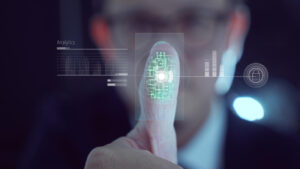Data security is turning out to be a crucial thing these days not only for businesses but also for individuals feels Bahaa Abdul Hadi. However, cyber threats are turning out to be more and more sophisticated these days. So, it becomes important to choose an innovative solution that goes beyond conventional techniques of protecting data. Thanks to Wearable biometrics and biometric encryption. They can help users achieve the highest level of data protection. With these solutions, it will be possible to get improved protection for sensitive information.
Get A Personalized Security Shield with the Help of Wearable Biometrics
When it comes to improving data security, wearable biometrics are turning out to be the popular option. The reason is that this wearable technology can verify users accurately. It can do it by evaluating the unique behavioral traits and physiological features like the pattern of the iris, fingerprints and even the heart rate. Thanks to biometrics! They strongly deter unauthorized access since they are hard to duplicate as against conventional PINs and passwords.
With the help of biometric authentication, data security in wearable technology has achieved a new height. We are already using our fingerprints to unlock our phones. Can you imagine unlocking your laptop or approving your bank transactions using your iris by glancing at a camera? This is possible with wearable biometric devices. They offer not only trustworthy but also practical means to confirm identity. In turn, the danger of unauthorized access to private information is lowered.
Biometric Encryption: The Foundation of Data Protection
Wearable biometrics can authenticate users securely. Nevertheless, the data must be safeguarded at the time of both storage and transmission. This is where biometric encryption can help. To safeguard information, a technique called biometric encryption brings together biometric data and encryption techniques. By doing this, it assures that even if an attacker tries to intercept data, he cannot do it without the biometric key.
By transforming biometric data into intricate mathematical representations, biometric encryption improves data security. It does it by making it virtually impossible for hackers to decode the original data. This technique will help with bringing down the risk of widespread data breaches. It does it by protecting the integrity and privacy of sensitive information. Here, the biometric data is stored in a centralized database.
Conclusion
Data security must change along with the digital environment. The growing difficulties in data protection can be addressed by using wearable biometrics and biometric encryption. You can take your data security to the next level with wearable biometrics and biometric encryption. The article has been authored by Bahaa Abdul Hadi and has been published by the editorial board of Identity Herald. For more information, please visit www.identityherald.com.




